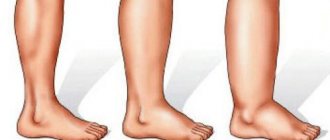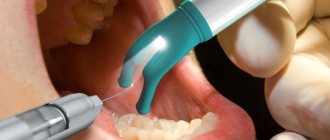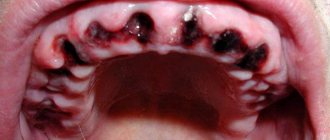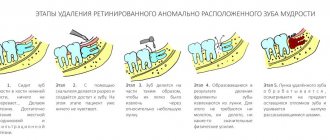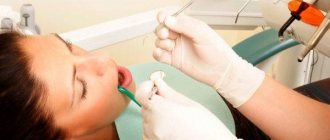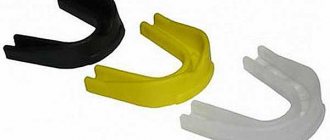There are various plastic surgeries in the facial area that can restore an elastic, toned, fresh look, give youth and restore beauty. Depending on the type and complexity of the operation, the duration and features of recovery differ. Some corrections are quite complex and require a long rehabilitation period. Others allow you to return to normal life in the near future after the intervention.
But regardless of the type, complexity and volume of the operation, almost any intervention, like other surgical procedures, is accompanied by the appearance of edema during the recovery period. This is a natural reaction of the body and an inevitable part of the rehabilitation process. Following your doctor’s recommendations will help speed up the decline of swelling and allow you to recover as quickly as possible.
What is leg swelling
Swelling of the legs is an external manifestation of the accumulation of fluid in the body. At the same time, the limb itself noticeably increases in size, the skin on it becomes loose, and when pressed, dents appear that do not disappear instantly.
Swelling usually occurs in the evening, although it can still cause discomfort the next morning. It is localized:
- in the feet;
- in the ankles;
- in the legs;
- from socks to knee.
Depending on the reasons, either one leg or both may swell. Symmetrical distribution often indicates generalized edema, which may be a symptom of a life-threatening condition.
If this trouble appears rarely, then you can fight it with folk remedies. The regularity of occurrence indicates a disease of the internal organs. Therefore, it is important to establish the nature of the swelling.
Swelling after tooth extraction: when is there no reason to worry?
Tooth extraction (even a low-traumatic one) is an intervention that does not go away without leaving a trace. When the patient has a healthy and strong body, and the doctor has done his job perfectly, the negative effects are practically not felt and disappear as soon as possible, however, in some cases, pain, swelling and other unpleasant consequences still occur. Acceptable manifestations during the rehabilitation process include:
- elevated temperature (not higher than 37.5 degrees), which normalizes within two days;
- small localized swelling that does not extend to the entire side of the face; If we talk about how long it takes for the swelling to subside after tooth extraction, then on average it goes away within two to three days;
- subtle swelling of the cheek, which disappears already on the second or third day after tooth extraction;
- pain - pain always appears after the anesthesia wears off, but it should not be very strong and bother you for more than four days. Of course, the patient may experience some unpleasant and uncomfortable sensations for ten to twelve days, but the positive trend is a decrease in pain and swelling every day.
Causes of leg swelling
When there is too much fluid in the tissues, it means that there is a malfunction in the functioning of the body. Most often, swelling is caused by:
- protein metabolism disorder;
- damage to cell membranes, increasing their permeability;
- changes in pressure differences in tissues and vessels;
- impaired blood circulation.
There are many reasons for such failures. Some are temporary (allergic reaction, bruise, infection). Others indicate the development of pathologies of the lower extremities (varicose veins, thrombophlebitis). Still others indicate serious diseases of the internal organs (heart, kidneys, lymphatic system).
A person cannot independently determine why his foot is swollen: because of uncomfortable shoes or because of a blocked blood vessel. Therefore, you should not postpone a visit to the doctor for subsequent treatment.
Why does one leg swell?
If the swelling is asymmetrical, its cause is localized directly in the affected limb. Swelling may occur due to bruises on the legs or more serious injuries:
- ankle joint injuries;
- meniscus tear;
- separation of the calf muscle;
- bone fracture;
- tissue compression.
Venous edema is also most often unilateral. Varicose veins cause fluid stagnation, but they are localized in one limb where the vessels are affected. This is indicated by the characteristic venous network.
Thrombophlebitis disrupts blood circulation, and at the same time the outflow of fluid from tissues. In this case, swelling is accompanied by other unpleasant symptoms: fever, pain, compaction in the blockage area.
What other consequences might occur?
Some patients are interested in whether facial plastic surgery leaves swelling in combination with other consequences of the operation, or whether it is possible to do without consequences. The appearance of swelling and bruising is a common occurrence after almost any plastic surgery. This is completely normal and is not a cause for concern.
Also, common consequences of plastic surgery include a slight increase in temperature, pain in the intervention area, and slight discharge of blood and lymph from the incision sites in the first days. Small lumps may appear. In some cases, a decrease in sensitivity is observed in the correction area. If you notice one or more of the symptoms listed above, do not panic. If you are concerned, you can visit your surgeon.
Why do both legs swell?
If by the end of the day both lower limbs are swollen, it means that excess fluid is present throughout the body. Most often this condition is caused by:
- heat;
- excessive fluid intake;
- obesity;
- uncomfortable shoes (tight, high heels, completely flat soles);
- flat feet;
- unhealthy diet (lots of salty and spicy foods in the diet);
- standing on your feet for a long time or in an uncomfortable position.
Fluid stagnation in these cases is caused by improper load distribution. None of the above indicates a threat to life, and the swelling goes away in a day or two. For some, it is enough to take off their shoes and relax, while others resort to folk remedies to relieve discomfort. But symmetrically swollen legs can also indicate more serious diseases that require urgent treatment.
How can you reduce discomfort and ease your general condition?
Implantation is a trauma for the body. The procedure is performed quickly and with minimal risks to the patient, but the consequences should be expected. The installation of artificial roots requires high-quality postoperative oral care. This is necessary to relieve swelling and prevent the development of infection.
To reduce facial swelling after surgery, you must follow your doctor’s instructions:
- On the first day , apply cold to the side of the face where the operation was performed. Session duration is 5-10 minutes. Repeat the procedure at intervals of 20 minutes. A break is necessary to prevent hypothermia.
- Correctly position your head while sleeping . To prevent the blood from rushing to the head and the swelling from increasing, you need to sleep on a high pillow. Compliance with this measure is recommended for a week.
- Maintain oral hygiene. Treat teeth located near the operated area with a 3% hydrogen peroxide solution. The rest are cleaned in the standard way.
- Rinse your mouth with herbal decoctions . Oak bark, chamomile, and calendula relieve swelling well. The procedure is prescribed a few days after implantation, when the process of tightening the soft tissues has passed.
- Follow a postoperative diet. Do not eat hard, hot or spicy foods. Chopped food at room temperature is recommended.
When general swelling indicates danger to life
Sometimes swelling of the lower extremities is a symptom of a general imbalance in the body's hydrobalance. In the case of heart failure, the body's main muscle cannot cope with pumping blood. The fluid in the body is distributed unevenly, and too much accumulates at the bottom. If the patient stands or sits in one position for a long time, his feet and legs swell.
Kidney failure can also lead to swelling. It appears not only on the legs, but also on the arms, face (mainly under the eyes), and abdominal wall.
If cardiac edema develops gradually (over weeks), then renal edema develops very quickly. With cardiac diseases, the skin becomes colder, with kidney diseases it maintains a normal temperature.
Fluid retention can also be caused by lymphedema, which is damage to the lymphatic vessels. The swelling in this case is dense; after pressing on the skin, there is no indentation.
When should you see a doctor?
Unfortunately, not all postoperative complications are harmless and go away on their own over time. In some cases, you should contact your doctor immediately and tell them about your symptoms. Alarming situations include:
- severe increase in body temperature (above 38°C),
- increasing swelling every day,
- severe skin rashes,
- the appearance of non-healing hematomas,
- constant heavy discharge from wounds,
- suppuration at the incision sites,
- severe pain,
- loss of sensitivity and disturbance of facial expressions.
If any of these symptoms occur, you should see your surgeon or other available specialist as soon as possible. In emergencies, emergency assistance should be called immediately.
It is worth noting that the occurrence of such severe complications is very rare. Most often this is due to insufficient qualifications of the surgeon and violation of the surgical technique. Contacting trusted clinics is the key to health and safety.
Why do feet swell during pregnancy?
During pregnancy, the outflow of fluid is often disrupted. This is explained by large-scale changes occurring in the body:
- weight gain;
- changes in hormonal levels;
- compression of the inferior vena cava by the enlarging uterus;
- decreased mobility;
- diet correction.
In most cases, swelling is considered as a variant of the physiological norm. There is no need to resort to drug treatment; it is enough to keep the situation under control. However, the spread of edema throughout the body can result in serious pathologies, such as preeclampsia.
The expectant mother should monitor the dynamics of the increase in calf circumference, blood pressure and the ratio of fluid consumed and excreted. The kidneys experience increased stress during pregnancy, so at the first alarming symptoms it is better to be examined by a nephrologist.
Treatment of leg swelling
The treatment package depends on the cause of the unpleasant symptom. If it is not associated with serious diseases, but is caused by improper distribution of the load, it is enough to locally relieve the swelling. This can be done at home.
If it is caused by local reactions (bruise, allergy, infection), then it is necessary to provide the victim with the necessary assistance:
- treat the damaged area;
- apply ice;
- give medicine.
Sometimes this can be done at home, sometimes medical attention is required. After a few days, the swelling will disappear as the tissue heals.
Drug treatment under the supervision of a phlebologist is required for varicose veins and thrombophlebitis. If the disease is advanced, surgery may be required. After restoration of venous tone and normal blood circulation, external symptoms will disappear.
Swelling of the nose after rhinoplasty. Recommendations for patients
Alexander Alexandrovich Markushin daily performs several plastic surgeries on the nose and other parts of the body of varying complexity.
Thanks to the excellent equipment of the clinic and vast experience, Dr. Markushin can easily cope with any task. Up to eighty percent of people seeking help come not only for aesthetic, but also for medical reasons, in order to restore normal breathing. The remaining twenty percent of patients want only an aesthetic improvement in the appearance of the nose.
Rhinoplasty, successfully performed by a specialist, still requires long-term rehabilitation. Each body reacts differently to surgery. Only by strictly following the recommendations of your doctor can you speed up the regeneration process.
Why and in what areas does swelling appear after rhinoplasty?
The most common problem after nose surgery is the appearance of swelling in different parts of the face. The abundance of capillaries and blood vessels on the underlying tissues, close to the operated areas, causes numerous bruises and swelling. Injury to the epidermis leads to inflammation and the appearance of numerous microbleeds. Blood soaking into tissues through damaged vessels located near the operation site leads to the formation of bruises. When intercellular fluid accumulates in one place under the skin, it forms swelling.
Most of the trauma during rhinoplasty is caused to the tissues of the back or wings of the nose. In addition, the surgeon’s actions are reflected in the spaces near the eyes, cheeks, or lips located nearby and connected by the same circulatory system.
After the operation, you need to wait for the appearance of blue circles near the eyes, swelling of the cheeks and lips. Despite the fact that at the preliminary consultation each patient is warned about external manifestations, the first impression can still cause a panic attack.
The plastic surgeon, having completed the work, explains how the body’s recovery will proceed, and offers the optimal set of medications, ointments, and gels to speed up the regeneration process.
How long will swelling and bruising last after rhinoplasty?
Each body reacts differently to external influences. There are no universal methods that are equally suitable for every patient who has undergone surgery. It is impossible to predict how much time and effort will be required until the bruises and swelling disappear.
Most people notice improvement within a day or three days. Self-regeneration of tissue leads to fluid outflow and uniform distribution over adjacent areas. At the same time, small compactions and swelling can persist for up to a year, although their presence is noticeable only to specialists.
Swelling is most severe after osteotomy, when part of the skeleton of the bone base is removed, which injures the periosteum.
How quickly patients get rid of edema is demonstrated by the statistics collected by Dr. Markushin.
Immediately after rhinoplasty
Correction of a deviated septum, changes in the shape, size, and configuration of the nose results in severe swelling. The maximum concentration of bruises and swelling will occur on days 4-5.
1 week after rhinoplasty
The peak of tissue changes with distinct bruises and severe swelling appears at the end of the first seven days, after which they begin to go away.
2-3 weeks after rhinoplasty
At this time, the plaster splint is usually removed, and the swelling, no longer controlled by it, begins to gradually increase. Maximum swelling in the vast majority of patients after complex operations will persist for 2-3 weeks.
1 month after rhinoplasty
After completing the fourth week, most patients get rid of maximum swelling and blue spots on the face, which makes it possible to begin normal household duties and go to work.
2-3 months after rhinoplasty
Swelling of the operated periosteum lasts the longest, up to 2-3 months. A slight swelling is noticeable on the back and tip of the nose.
4-5 months after rhinoplasty
In the fifth month of rehabilitation, internal swelling of the mucous membrane or periosteum is felt by the patient or doctor when palpating the surgical site.
6 months after rhinoplasty
By this time the swelling usually goes away completely. The nose becomes thin. During this period, it is already possible to evaluate the result of rhinoplasty.
1 year after rhinoplasty
As a rule, starting from 6 to 12 months, there is no longer tissue edema. By one year the nose has healed completely.
Important!!!
An increase in swelling or the appearance of new bruises indicates the occurrence of internal inflammatory processes. This is a signal for immediate consultation with your doctor. A special course of physiotherapy or a set of additional medications may be needed.
Ways to reduce swelling and fight bruises
The main thing is not to panic when your face becomes unusually plump with blue streaks. Panic will not produce results, but will only negatively affect the psychosomatic state.
Alexander Alexandrovich will recommend the necessary procedures and medications so that regeneration occurs as quickly as possible.
After simple correction, swelling may disappear within a few hours or be insignificant.
For the first week of rehabilitation, it is recommended to follow simple rules so that swelling disappears as quickly as possible:
- a semi-sitting position during sleep or rest will reduce the flow of blood and fluid to the inflamed areas;
- no massages, deep palpations, decorative cosmetics for the first 5-7 days;
- avoid direct sunlight, high air temperature in the apartment, baths, saunas, swimming pools, hot water baths;
- Physical activity, yoga or sports with the head tilted forward are not allowed.
Recommendations for the second and third weeks of recovery after surgery:
- You should not sleep lying on your stomach or side. Organize your rest in such a way that you lie face up;
- exclude the possibility of sudden displacement of the underlying tissue or areas of skin located close to the operation site;
- Do not heat the area of swelling or drink hot drinks;
- You can do normal household chores if they do not require sudden bending or excessive effort.
To speed up the process of tissue restoration, the doctor prescribes a set of gels and ointments with components that accelerate the recovery process, reduce the risk of inflammation, and increase the outflow of fluid.
Giving up bad habits will help reduce swelling in 3-4 months. Smoking and alcohol stimulate blood flow, which causes swelling and bruising on the back of the nose or its tip. It is necessary to take care of contact lenses in advance for people suffering from low vision, so as not to wear glasses until the surgical site heals.
Alexander Alexandrovich is always in touch. He is ready to advise on any issue. Be sure to see a specialist if the swelling does not go away after the fourth month.
How to behave if swelling remains unchanged for a long time?
Any unusual situations must be resolved quickly. If pain increases, swelling increases, or new bruises appear after surgery, contact your rhinoplasty surgeon as soon as possible. The quality of tissue regeneration processes is affected by age, the presence of chronic diseases, or violation of the regimen prescribed by the doctor. In addition, each body reacts individually to surgical intervention; additional factors appear that slow down the process of restoration of damaged areas of the body.
The doctor will examine the surgical site. He will make sure that the presence of swelling and bruising does not indicate inflammation developing at the site of the operation, but is just a reaction of the body that goes beyond the boundaries of the normal recovery process. An additional course of procedures is prescribed to accelerate the outflow of fluid and increase microcirculation.
Alexander Alexandrovich guides his patients until their final recovery, carefully monitoring the dynamics of the body’s recovery after a complex operation.
How to relieve swelling after a bruise
Treatment for a leg bruise usually comes down to eliminating pain and swelling. The swelling in this case is caused by damage to the blood vessels and the accumulation of fluid from them under the skin. The latter puts pressure on the nerve endings, hence the pain. So eliminating swelling also helps to get rid of unpleasant sensations.
You can help a bruised limb at home:
- stretch and provide peace;
- apply a wet towel, ice or a heating pad with cold water;
- apply a tight bandage.
You can also resort to drug treatment. External agents containing troxerutin or heparin will help. They strengthen capillaries, optimize blood viscosity and relieve inflammation.
Review of medications that help relieve swelling
Medicines will help relieve swelling from the face after implantation. They can be used internally and externally.
Rinsing with antiseptics of synthetic or plant origin:
- Synthetic antiseptics : Chlorhexidine, Miramistin, Furacilin. Eliminates the risk of pus formation and abscess development. Rinsing is done every time after eating. In the first days they are replaced with oral baths. Keep the solution in your mouth for a minute and carefully spit it out. To prevent dry mouth, long-term use of Chlorhexidine is not recommended. Constantly rinsing with the drug can cause the development of candidiasis in the mouth.
- Herbal antiseptics include : chamomile, yarrow, calamus root, elecampane, oak bark. These plants have an anti-inflammatory effect and have astringent properties. An effective drug is Stomatofit, consisting of an extract of calamus rhizomes, oak bark, thyme, mint, and sage. It destroys many bacteria, candida fungus.
Ointments and gels eliminate swelling. The drugs are applied to the gum area, but they also act on swelling of the outer part of the face:
- Cholisal is a gel containing choline salicylate that prevents the synthesis of prostaglandins that cause swelling and has an antimicrobial effect. Applications soaked in gel are placed at the site of edema formation.
- Solcoseryl is an ointment that accelerates tissue regeneration. It is applied to the gum. Before use, the tooth is treated with a solution of hydrogen peroxide.
- Metrogyl-Denta is an antibacterial gel. Prevents the development of infection, relieves swelling.
- Kamistad is an anesthetic antiseptic gel containing lidocaine. When used, numbness occurs in the gums and tongue.
- Asepta is a propolis-based gel with an antiseptic and anti-inflammatory effect.
- Parodontocide is a gel containing phenyl salicylate, which suppresses the synthesis of prostaglandins that cause swelling.
To relieve swelling and relieve pain, medications for internal use are prescribed:
- nonsteroidal anti-inflammatory and painkillers (Nimesulide, Analgin, Voltaren, Ketanov);
- antibiotics (Flemoklav, Augmentin, Amoxiclav).
How to relieve leg swelling caused by heat
The best medicine in this case is gravity. Arriving home and throwing away the shoes that have become a vice, it is enough to lie down and place your feet higher (at a minimum - on several pillows, at a maximum - against the wall).
When it becomes easier to move, you need to take a shower. Ideally, a contrasting one that trains blood vessels, but you can limit yourself to just cool. In this case, you should direct the pressure to the feet: such a hydromassage will restore blood circulation.
You can disperse the fluid with light exercises: pulling the toe towards you and away from you, rotating your feet, squatting. But if you don’t have the strength to do this, and your legs hurt, it’s better not to torture them.
Foot baths are also useful. Even plain water will provide relief, but you can enhance the effects with additives. This could be sea salt or herbal infusions. Compresses made from cabbage leaves or bandages soaked in a decoction of birch leaves improve the condition of the limbs.
Treatment of leg swelling due to heart or kidney failure
Patients with heart or kidney failure should be under the supervision of a physician. In acute attacks, resuscitation is required. If the disease takes a chronic form, swelling is removed as it appears with the help of diuretics and nutritional correction. Medicines should:
- stabilize blood pressure;
- remove excess sodium from the body;
- prevent protein loss;
- normalize blood flow speed.
When using diuretics (diuretics), it is important not to exceed the permissible dosage. Otherwise, there is a risk of getting the opposite effect in the form of drug-induced edema during withdrawal. They are caused by the kidneys’ reaction to a sudden change in the mode of fluid excretion.
How to remove swelling from the face?
Most often, we notice slight swelling on the face in the morning; this phenomenon is considered normal. Because at night the blood rushes to the face, which leads to a sleepy appearance. But after 10-15 minutes everything goes away. In case of a longer period, the following procedures can be performed:
- contrast washes, after which you can wipe your face with ice. This reduces puffiness and removes bags formed under the eyes. In this way you can cheer up and get a certain boost of energy;
- A good night's sleep must be well prepared. In the evening, you should not eat spicy, salty foods, or sweets. This affects the quality of sleep;
- the products you use to care for your face should be applied 2 hours before you go to bed;
- Swelling often occurs as a result of improper, irregular food intake. It is worth consuming less seasonings, sauces, smoked meats, and not eating fast food. Water may also be retained in the body due to sugar;
- The danger is posed by fatty foods that contain a lot of sugar. We are talking about various sweets, donuts, buns. They do not have a very good effect on the condition of the human body;
- As for proper nutrition, there should be enough animal proteins (fish, cottage cheese, meat, eggs). The diet should also include foods rich in calcium;
- Drink less water after 7 pm, do not eat;
- consume less salt, it contributes to fluid stagnation;
- It’s better to drink green tea and various decoctions to get a diuretic effect. In the summer, you can use watermelons for this. You should forget about carbonated drinks and sweet waters, which leave a bad mark on the body.
Relieving swelling during pregnancy
In the body of a woman carrying a fetus, the concentration of the hormone progesterone increases. It is one of the causes of edema during pregnancy. In no case should it be reduced, because it is this that ensures the attachment of the embryo.
There is no need to fight physiological swelling. The main thing is to prevent it from getting worse. To alleviate the symptoms, you can carry out the mentioned water procedures and adhere to a healthy lifestyle (moderate activity, water consumption within the daily norm, adjusted for restrictions imposed by pregnancy, rest on your side).
The pathological nature of edema can only be determined by a doctor based on test results (in particular, protein in the urine). Having discovered the cause, he will prescribe treatment. It is prohibited to take any medications on your own.
Prevention
Swelling cannot always be prevented, since it can occur under the influence of uncontrollable factors. There is no way to prevent a bruise or insect bite. But in general, maintaining hydrobalance in the body is easy:
- Observe the drinking regime: fully quench your thirst, but do not drink more than you should.
- Stick to a diet during the hot season: minimize the consumption of salty and spicy foods, eat more fruits, drink tea with lemon instead of coffee.
- Arrange water treatments: contrast showers, foot baths.
- Move more: walking, swimming, aerobics do not allow fluid to stagnate.
In summer, you should avoid tight, high-heeled shoes. It is useful to periodically place your feet on an elevation so that fluid concentrated in the lower part of the body drains. There is no need to abuse medications. Urinary and antihypertensive drugs should be prescribed by a doctor. Any diseases that have a similar symptom must be treated in a timely manner.
Tokareva Lyudmila Georgievna, therapist, medical offices 36.6.
THERE ARE CONTRAINDICATIONS, BEFORE USE YOU MUST CONSULT WITH A SPECIALIST
How to speed up healing
How much the nose swells after rhinoplasty is a very individual question. Recovery takes a different time for each patient. But it is still possible to help your body and stimulate speedy healing. To do this, you must follow the following rules:
- do not visit the bathhouse, sauna,
- do not take hot baths,
- do not tilt your head or body forward,
- limit physical activity,
- give up alcohol and cigarettes,
- sleep half-sitting.
High temperatures, as well as bending the body forward, promote blood flow to tissues, including injured ones, which negatively affects healing. In addition to avoiding thermal procedures, you can additionally help yourself by applying cold compresses to the operated area.
These recommendations and prohibitions do not apply for the rest of your life, but only for the first weeks after surgery. Following these rules will help speed up regeneration and reduce the number of days it takes for swelling to subside after rhinoplasty.
The operation is suitable for both women and men.
